Research Overview
Prof. Jian Sun's research group has long been dedicated to developing and applying machine learning-driven computational methods for material simulations, providing fundamental frameworks and tools for condensed matter physics and materials science research. In recent years, we have particularly focused on interdisciplinary fields including high-pressure physics, materials design, and planetary science, investigating material behaviors and properties under extreme conditions. Our work aims to design novel materials with superior performance while expanding the boundaries of human understanding of matter under extreme environments.
Research Direction 1: Development of Computational Methods
As the foundation of theoretical research in condensed matter physics and materials science, we focus on advancing computational methodologies including structure prediction, graph theory, machine learning force fields, and machine-learned Hamiltonians, striving to provide comprehensive solutions spanning crystal structures, dynamics, and electronic properties. Recent achievements include:
- Development of MAGUS, a machine learning and graph theory-enhanced crystal structure prediction method demonstrating over 10-fold acceleration compared to conventional first-principles searches
- Creation of HotPP, a higher-order tensor message-passing machine learning force field achieving accuracy comparable to the world's most precise ML force fields
- Collaborative development of GPUMD, a GPU-accelerated machine learning molecular dynamics engine capable of simulating systems with tens of millions of atoms using a single graphics card
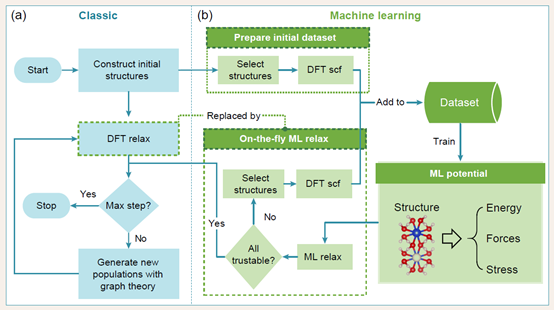
The workflow of MAGUS
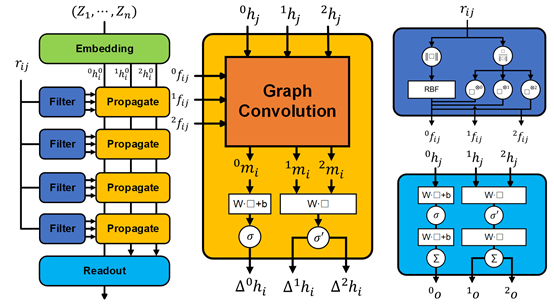
The network architecture of HotPP
Representative Publications:
- Han et al., Efficient crystal structure prediction based on the symmetry principle, Nature Computational Science 5, 255 (2025).
- Wang et al., MAGUS: machine learning and graph theory assisted universal structure searcher, Natl. Sci. Rev. 10, nwad128, (2023).
- Wang et al., E(n)-Equivariant cartesian tensor message passing interatomic potential, Nature Commun. 15, 7607 (2024).
- Song et al., General-purpose machine-learned potential for 16 elemental metals and their alloys, Nature Commun. 15, 10208 (2024).
- Fan et al., GPUMD: A package for constructing accurate machine-learned potentials and performing highly efficient atomistic simulations, J. Chem. Phys. 157, 114801 (2022).
Research Direction 2: Dynamical Simulations of Novel States of Matter and Phase Transitions
While static calculations typically study zero-temperature properties, dynamical simulations form the basis for investigating finite-temperature states and phase transitions. Leveraging first-principles and machine learning molecular dynamics, we have made significant progress in characterizing exotic states (superionic, plastic crystal, and cooperative diffusion states, etc) and phase transition pathways. Key contributions include:
- Predicting high-pressure helium-water/ammonia/methane compounds and Si-O-H, Mg-O-H compounds, that reshape understanding of planetary interior structures
- Revealing one-dimensional cooperative diffusion in compressed calcium with its electronic origin, discovering an elemental analog to superionic states
- Elucidating high-pressure phase transition mechanisms in carbon and carbon dioxide systems that have guided experimental investigations
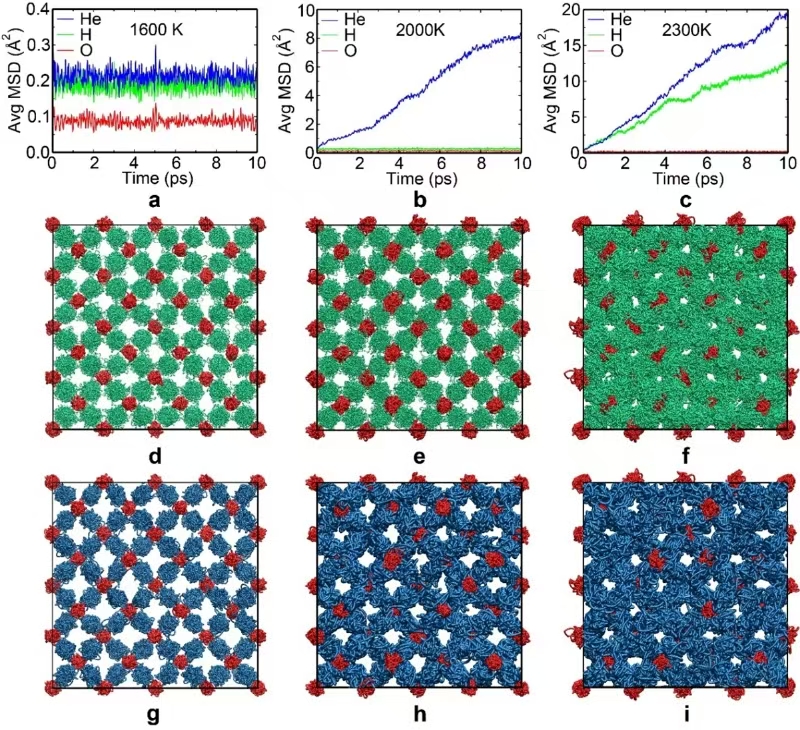
Simulation of phase transitions under extreme conditions
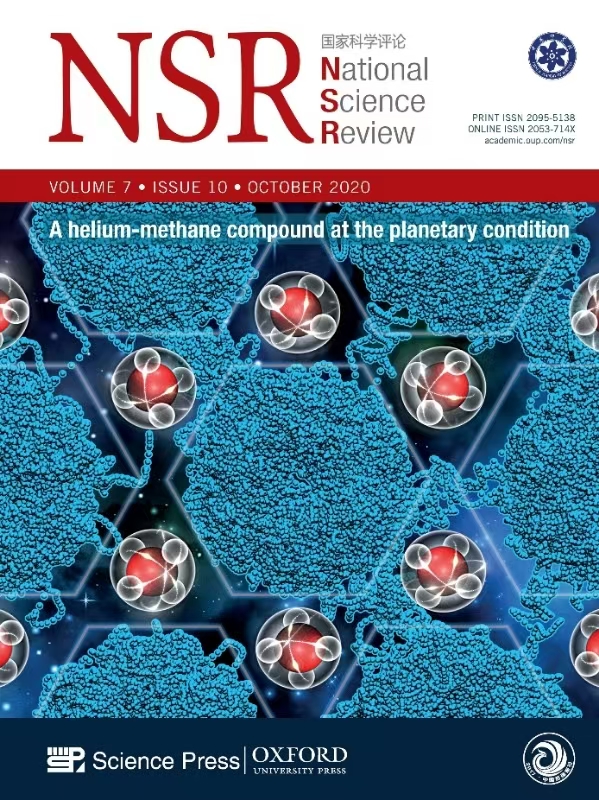
Cover of Nattional Sicience Review, Volume 7, Issue 10, October(2020)
Representative Publications:
- Cong Liu, Hao Gao, Andreas Hermann, Yong Wang, Maosheng Miao, Chris J. Pickard, Richard J. Needs, Hui-Tian Wang, Dingyu Xing, and Jian Sun*, “Multiple superionic states in helium-water compounds”, Nature Physics 15, 1065 (2019).
- Gao et al., Coexistence of plastic and partially diffusive phases in a helium-methane compound, National Science Review 7, 1540 (2020).
- Gao et al., Superionic Silica-Water and Silica-Hydrogen Compounds in the Deep Interiors of Uranus and Neptune, Phys. Rev. Lett. 128, 035702 (2022).
- Wang et al., Electronically driven 1D cooperative diffusion in a simple cubic crystal, Phys. Rev. X 11, 011006 (2021).
- Shi et al., Double-Shock Compression Pathways from Diamond to BC8 Carbon, Phys. Rev. Lett. 131, 146101 (2023).
Research Direction 3: Prediction and Design of High-Pressure Materials
High pressure serves as a crucial means to modulate material properties and synthesize novel materials. Our recent work spans predictions of geologically relevant materials under planetary interior conditions, nitrogen-rich ultrahard/energetic materials, superconductors, and topological quantum materials. Notable achievements include:
- Identifying mixed-coordination SiO2 phases under Neptune's core conditions
- Designing superhard nitrogen-rich materials later experimentally synthesized
- Proposing strategies for high-pressure synthesis of novel quantum materials

High-pressure material structure prediction
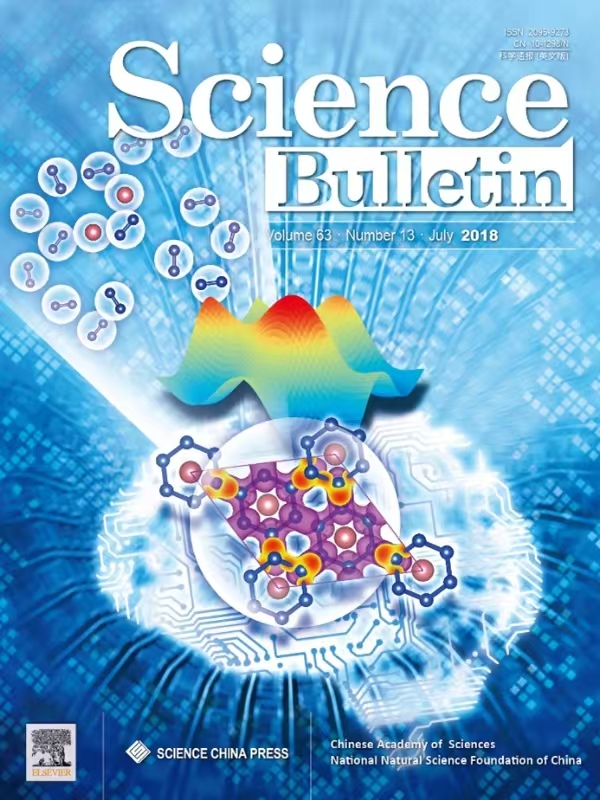
Cover of Science Bulletin, Volume 63, Number 13, July(2018)
Representative Publications:
- Liu et al., Mixed coordination silica at megabar pressure, Phys. Rev. Lett. 126, 035701 (2021).
- Xia et al., A novel superhard tungsten nitride predicted by machine-learning accelerated crystal structure search, Sci. Bull. 63, 817 (2018). Cover story
- Salke et al., Tungsten hexanitride with single-bonded armchair-like hexazine structure at high pressure, Phys. Rev. Lett. 126, 065702 (2021).
- Ying et al., Record High 36 K Transition Temperature to the Superconducting State of Elemental Scandium at a Pressure of 260 GPa, Phys. Rev. Lett. 130, 256002 (2023).
- Zhou et al., Pressure-induced new topological Weyl Semimetal phase in TaAs, Phys. Rev. Lett. 117, 146402 (2016).